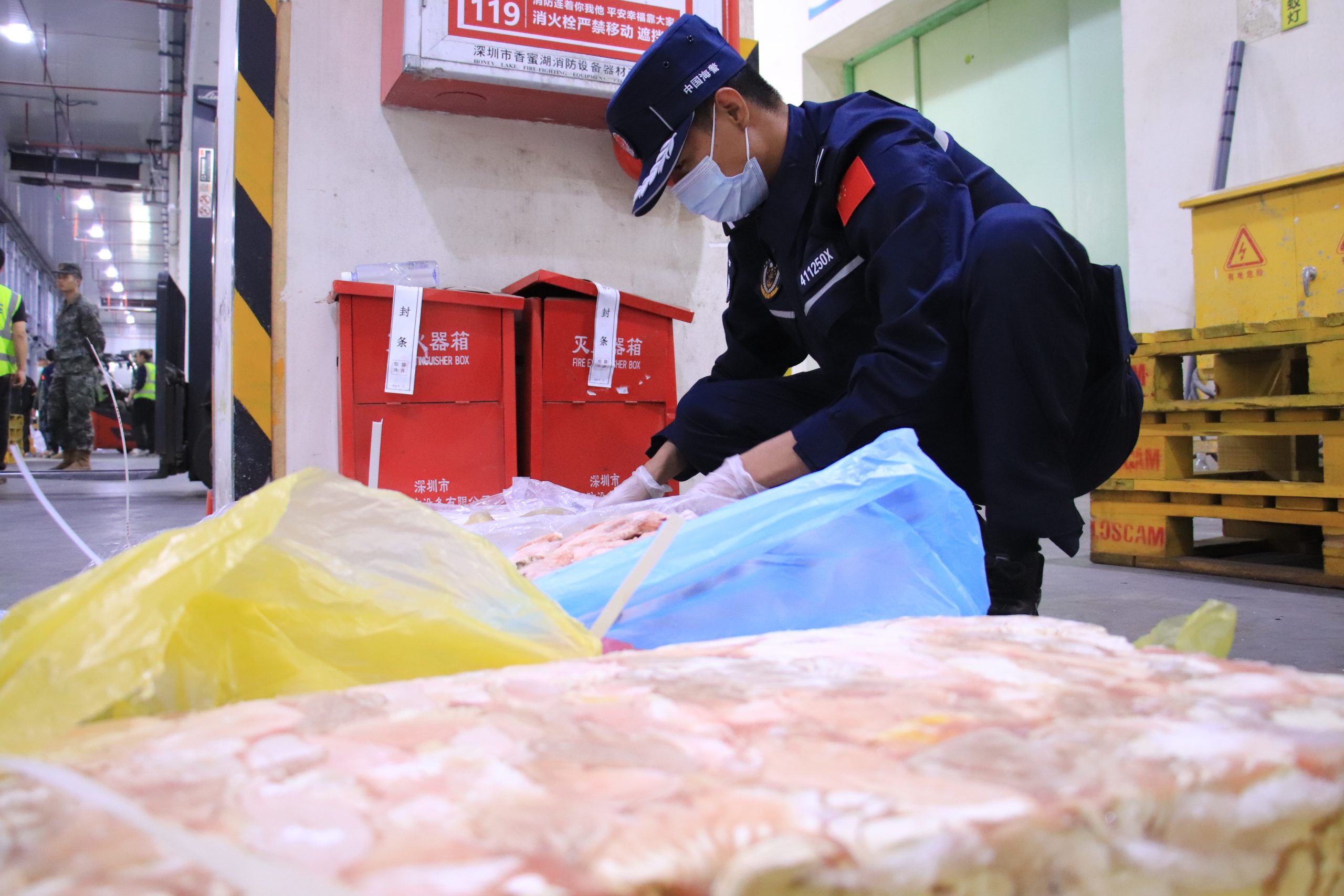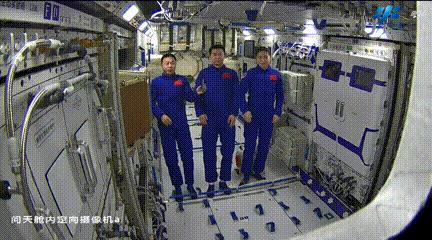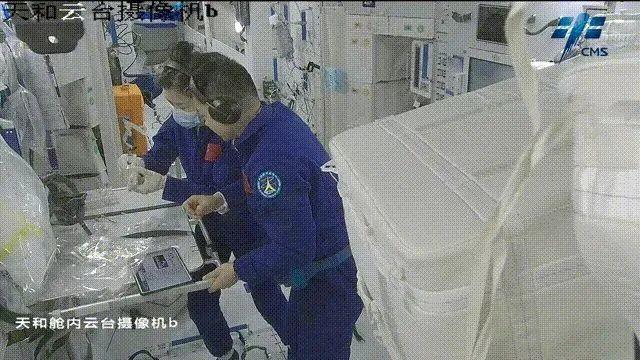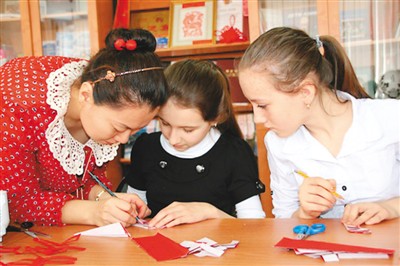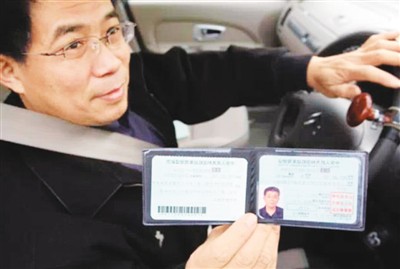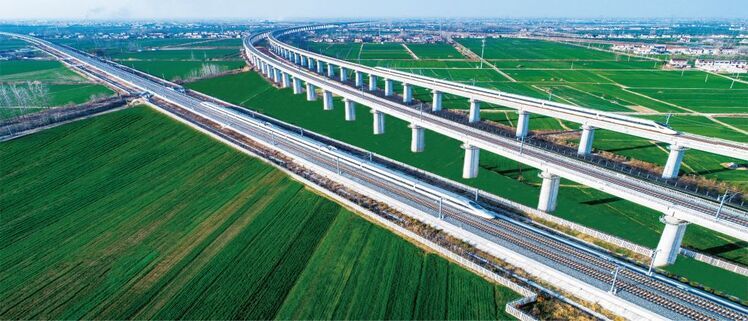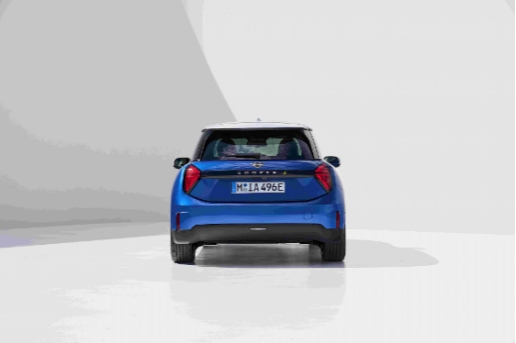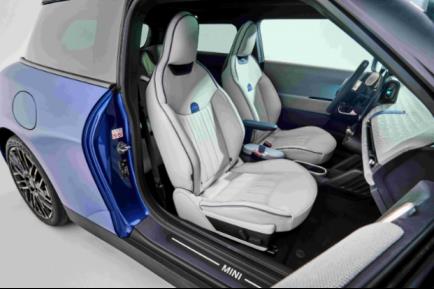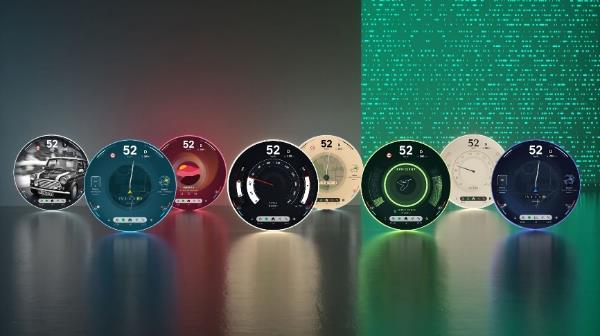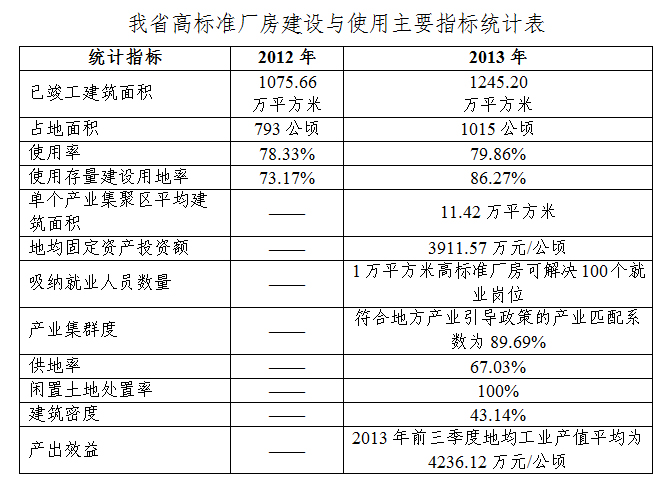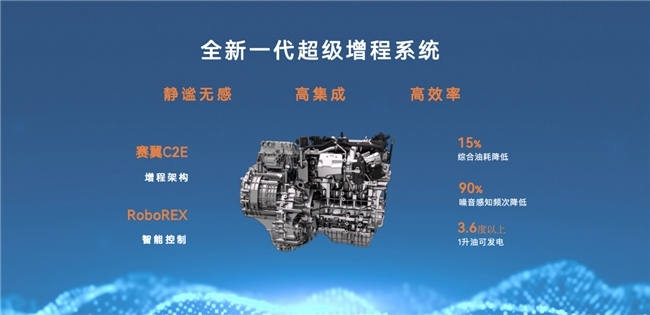Notice of the National Development and Reform Commission of the Ministry of Housing and Urban-Rural Development on printing and distributing the implementation plan of peak carbon dioxide emissions in the field of urban and rural construction
Urban and rural construction is one of the main areas of carbon emissions. With the rapid advancement of urbanization and the deep adjustment of industrial structure, the carbon emissions in urban and rural construction and its proportion in the total carbon emissions of the whole society will be further improved. In order to thoroughly implement the decision-making arrangements of the CPC Central Committee and the State Council on carbon neutrality in peak carbon dioxide emissions, control the growth of carbon emissions in urban and rural construction, and effectively do a good job in peak carbon dioxide emissions in urban and rural construction, this implementation plan is formulated according to the Opinions of the Central Committee of the Communist Party of China and the State Council on Completely, Accurately and Comprehensively Implementing the New Development Concept and Doing a Good Job in Carbon Neutralization in peak carbon dioxide emissions, and the peak carbon dioxide emissions Action Plan before 2030.
I. General requirements
(1) Guiding ideology. Guided by the Supreme Leader’s Socialism with Chinese characteristics Thought in the New Era, we will fully implement the spirit of the 19th National Congress of the Communist Party of China and the previous plenary sessions of the 19th National Congress, thoroughly implement the Supreme Leader’s ecological civilization thought, adhere to the general tone of striving for progress while maintaining stability in accordance with the decision-making arrangements of the CPC Central Committee and the State Council, fully implement the new development concept based on the new development stage, build a new development pattern, adhere to ecological priority, conservation priority, protection priority, harmonious coexistence between man and nature, and adhere to the system concept. Coordinate development and safety, take green and low-carbon development as the guide, promote urban renewal and rural construction, accelerate the transformation of urban and rural construction methods, improve the quality of green and low-carbon development, and continuously meet the people’s needs for a better life.
(2) Working principles. Adhere to systematic planning and step-by-step implementation, strengthen the top-level design, strengthen the control of results, reasonably determine the work rhythm, and make overall plans to promote the realization of peak carbon dioxide emissions. Adhere to local conditions, distinguish between cities, villages and different climate zones, and scientifically determine the requirements for energy conservation and carbon reduction. Adhere to innovation, transformation and development, strengthen core technologies, improve the technical system, strengthen mechanism innovation, and improve the carbon emission reduction management system for urban and rural construction. Adhere to the two-wheel drive, work together, give full play to the role of government-led and market mechanisms, form an effective incentive and restraint mechanism, implement joint construction and sharing, and jointly promote various tasks.
(3) Main objectives. Before 2030, carbon emissions in urban and rural construction will reach the peak. The policy system and institutional mechanism of green and low-carbon development in urban and rural construction have been basically established; The level of building energy conservation and garbage resource utilization has been greatly improved, and the efficiency of energy resource utilization has reached the international advanced level; The energy consumption structure and mode are more optimized, and the application of renewable energy is more sufficient; Positive progress has been made in the green and low-carbon transformation of urban and rural construction methods, and "a lot of construction, a lot of consumption and a lot of emissions" have been basically reversed; The integrity, systematicness and growth of the city have been enhanced, and the problem of "urban disease" has been initially solved; Building quality and engineering quality have been further improved, and the quality of human settlements has been greatly improved; Green lifestyles have generally taken shape, and green and low-carbon operation has been initially realized. Strive to achieve a green and low-carbon transformation of urban and rural construction methods, systematic changes, a beautiful living environment, and the modernization of carbon emission control in urban and rural construction by 2060, and people’s lives will be happier.
Second, building a green and low-carbon city
(4) Optimize the urban structure and layout. Urban form, density, functional layout and construction mode have fundamental and important impacts on carbon emission reduction. Actively carry out the construction of green and low-carbon cities and promote group development. The area of each group is not more than 50 square kilometers, the average population density within the group is not more than 10,000 people/square kilometer in principle, and the maximum number of individual lots is not more than 15,000 people/square kilometer. Strengthen the overall layout of ecological corridors, landscape corridors, ventilation corridors, waterfront spaces and urban greenways, leaving enough urban rivers and lakes ecological spaces and flood control and drainage spaces. The ecological corridors between groups should be continuous and have a net width of not less than 100 meters. Promote urban ecological restoration and improve urban ecosystem. Strictly control the construction of new super-high-rise buildings, and generally no new super-high-rise residential buildings are allowed. The new town and new district should reasonably control the proportion of occupation and residence, and promote the balanced and integrated layout of employment and living space. Reasonable layout of urban rapid trunk traffic, living distribution traffic and green slow traffic facilities, the density of road network in the main city should be greater than 8 km/km2. Strictly manage the demolition of existing buildings, and insist on promoting urban renewal from "demolition to stay" to "stay and change". Except for illegal buildings and buildings identified as dangerous buildings by professional institutions and without repair and reservation value, the existing buildings will not be demolished on a large scale and in pieces. In principle, the demolition area of urban renewal units (districts) or projects should not be greater than 20% of the total construction area. Revitalize existing houses and reduce all kinds of vacant houses.
(V) Building green and low-carbon communities. Community is an important place to form a simple and moderate, green and low-carbon, civilized and healthy lifestyle. Promote mixed blocks with complex functions and advocate mixed layout of residential, commercial and pollution-free industries. Basic public service facilities, convenient commercial service facilities, municipal supporting infrastructure and public activity space will be built in accordance with the Standard for the Construction of Complete Residential Communities (Trial), and the coverage rate of complete residential communities in cities at prefecture level and above will be increased to over 60% by 2030. Through the network of walking and cycling, several residential communities are connected in series to build a fifteen-minute life circle. We will promote the creation of green communities, run the concept of green development through the whole process of community planning, construction and management, and 60% of urban communities will meet the creation requirements first. Explore the construction of zero-carbon community. Encourage property service enterprises to provide home-based care, housekeeping, child care, fitness, shopping and other life services to owners, and meet the basic needs of owners within walking distance. Encourage the use of green household appliances and reduce the use of disposable consumer goods. Encourage "part space, part time" and other green and low-carbon energy use methods, advocate turning off the lights at will, and turn off the socket power when TV, air conditioner, computer and other electrical appliances are not in use. Encourage the use of new energy vehicles and promote the construction of community charging and replacing facilities.
(6) Comprehensively improve the level of green and low-carbon buildings. We will continue to create green buildings. By 2025, new buildings in cities and towns will fully implement green building standards, and the proportion of star-rated green buildings will reach more than 30%. Newly-built public welfare buildings and large-scale public buildings invested by the government will all reach more than one star. Before 2030, the new residential buildings in severe cold and cold areas will meet the energy-saving requirements of 83%, the new residential buildings in hot summer and cold winter, hot summer and warm winter and mild areas will meet the energy-saving requirements of 75% and the new public buildings will meet the energy-saving requirements of 78%. Promote the large-scale development of low-carbon buildings and encourage the construction of zero-carbon buildings and near-zero energy-consumption buildings. Strengthen the appraisal and evaluation of energy-saving transformation, prepare the special plan for transformation, and make all changes to residential buildings with transformation value and conditions, and the energy-saving level of some transformation should reach the current standards. We will continue to promote the construction of key cities to improve the energy efficiency of public buildings. By 2030, all key cities above the prefecture level will complete the transformation tasks, and the overall energy efficiency will be improved by more than 20% after the transformation. Promote energy consumption monitoring and statistical analysis of public buildings, and gradually implement energy consumption quota management. Strengthen the operation adjustment of key energy-using equipment such as air conditioners, lighting, elevators, etc., and improve the energy efficiency of the equipment. By 2030, the overall energy efficiency of the electromechanical system of public buildings will be improved by 10% at the current level.
(seven) the construction of green low-carbon housing. Improve the quality of housing, actively develop small and medium-sized ordinary housing, and limit the development of super-large housing. According to the local climate conditions, the residential orientation, window-wall ratio and shape coefficient are reasonably determined to reduce residential energy consumption. Reasonable layout of living space, encourage large width and small depth, and make full use of sunshine and natural ventilation. Implement flexible living space design to reduce the waste of resources caused by renovation or demolition. Promote the full renovation and delivery of new residential buildings, and reduce resource consumption and environmental pollution. Actively promote the assembly decoration, implement the application technology of modular parts such as integral bathroom and kitchen, and realize the detachable and recyclable parts. Improve the maintenance level of shared facilities and equipment, and enhance the degree of intelligence. Strengthen the maintenance and management of residential common parts and prolong the service life of residential buildings.
(eight) improve the efficiency of infrastructure operation. Systematic, intelligent, eco-green construction and stable operation of infrastructure can effectively reduce energy consumption and carbon emissions. We will carry out the renovation project of the old heating pipe network for more than 30 years, strengthen the replacement of insulation materials of the heating pipe network, and promote the intelligent transformation of heating stations and pipe networks. By 2030, the heat loss of urban heating pipe network will be reduced by 5 percentage points compared with 2020. We will carry out special actions to purify sidewalks and build bicycle lanes, improve the connecting facilities between urban rail transit stations and surrounding buildings, such as corridors or underground passages, increase the construction of urban bus lanes, improve the operational efficiency and service level of urban public transportation, and steadily increase the proportion of urban green transportation trips. We will fully implement waste classification, reduction and recycling, and improve the system of classified delivery, classified collection, classified transportation and classified treatment of domestic waste. By 2030, the utilization rate of urban domestic waste resources will reach 65%. Combined with the characteristics of the city, we should fully respect nature, strengthen the effective connection between urban facilities and the original ecological background such as rivers and lakes, adjust measures to local conditions, systematically promote the construction of sponge cities all over the world, and comprehensively adopt the methods of "infiltration, detention, storage, purification, use and drainage" to increase the storage and utilization of rainwater. By 2030, the average permeable area of urban built-up areas in China will reach 45%. Promote the construction of water-saving cities, implement the renovation of old urban water supply pipe networks, promote the partition measurement of pipe networks, and improve the intelligent management level of water supply pipe networks.Strive to control the leakage rate of urban public water supply network within 8% by 2030. The transformation of sewage collection and treatment facilities and the recycling of urban sewage will be implemented. By 2030, the average utilization rate of reclaimed water in cities nationwide will reach 30%. Accelerate the renovation of urban gas supply pipelines and facilities. Promote urban green lighting, strengthen the whole process management of urban lighting planning, design, construction and operation, and control excessive lighting and light pollution. By 2030, more than 80% of high-efficiency and energy-saving lamps such as LED will be used, and more than 30% of cities will have digital lighting systems. We will carry out actions to improve urban landscaping, improve the urban park system, promote the construction of greenway network in the central city and the old city, strengthen three-dimensional greening, and increase the proportion of native and local adaptive plants. By 2030, the green space rate in urban built-up areas will reach 38.9%, and the length of greenways in urban built-up areas will exceed 1 km/10,000 people.
(9) Optimize the energy consumption structure for urban construction. We will promote the integration of solar photovoltaic in buildings, and strive to achieve 50% photovoltaic coverage on the roofs of new public institutions and new factories by 2025. Promote the installation of solar photovoltaic systems on the roofs of existing public buildings. Accelerate the promotion of smart photovoltaic applications. In areas with abundant solar energy resources and buildings with stable hot water demand, actively promote the application of solar photothermal buildings. Promote the application of geothermal energy and biomass energy according to local conditions, and promote various electric heat pump technologies such as air source. By 2025, the replacement rate of renewable energy in urban buildings will reach 8%. Guide the development of building heating, domestic hot water, cooking, etc. to electrification. By 2030, building electricity will account for more than 65% of building energy consumption. Promote the comprehensive electrification of new public buildings, and the electrification ratio will reach 20% by 2030. Promote heat pump water heaters, high-efficiency electric stoves and other alternative gas products, and promote the application of high-efficiency DC appliances and equipment. Promote the application of smart microgrid, "flexible light storage", cold storage and heat storage, flexible load adjustment, virtual power plant and other technologies, give priority to the consumption of renewable energy power, and actively participate in power demand side response. Explore the intelligent group control technology of building electrical equipment, reasonably allocate the power load under the premise of meeting the power demand, and realize less capacity increase and no capacity increase. According to the existing energy infrastructure and economic affordability, the distributed cogeneration of hydrogen fuel cells is explored according to local conditions. Promote low carbonization of building heat source end, comprehensively utilize cogeneration waste heat, industrial waste heat and nuclear power waste heat,According to the actual situation around the application. Give full play to urban thermoelectric heating capacity and improve urban thermoelectric biomass coupling capacity. The municipal central heating is no longer used in buildings that lead to ultra-low energy consumption in cold areas.
(10) Promote green and low-carbon construction. Vigorously develop prefabricated buildings and promote steel residential buildings. By 2030, prefabricated buildings will account for 40% of new urban buildings in that year. Promote intelligent construction, cultivate 100 intelligent construction industrial bases by 2030, build a number of internet platforms for the construction industry, and form a series of landmark products for construction robots. Promote the precision processing and refined management of building materials in factories. By 2030, the loss rate of building materials on the construction site will be reduced by 20% compared with 2020. Strengthen the management and control of construction waste at the construction site, and by 2030, the emission of construction waste at the construction site of new buildings will not be higher than 300 tons/10,000 square meters. Actively promote energy-saving construction equipment, monitor the energy consumption of key equipment, and implement group control management for multiple similar equipment. Give priority to building materials products with green building materials certification marks, establish a mechanism for government projects to purchase green building materials, and comprehensively promote green building materials in star-rated green buildings by 2030. Encourage qualified areas to use wood and bamboo building materials. Improve the universality of prefabricated components and parts, and promote standardized, less specification and multi-combination design. Promote centralized treatment and graded utilization of construction waste, and by 2030, the resource utilization rate of construction waste will reach 55%.
Third, build green and low-carbon counties and villages
(eleven) to improve the level of green and low carbon in the county. Carry out the construction of green and low-carbon county towns, and build an intensive and economical county town pattern with pleasant scale. Make full use of natural conditions and conform to the original topography to realize the integration and coordination between the county and the natural environment. Combined with the actual implementation of the distributed layout of infrastructure combining large dispersion with small regional concentration, and the construction of green and economical infrastructure. It is necessary to strengthen the control of county construction density and intensity according to local conditions, and control the population density of county built-up areas located in ecological functional areas and major agricultural products producing areas at 0.6— 10,000 people per square kilometer, and the ratio of total building area to construction land should be controlled at 0.6— 0.8; The building height should match the fire fighting and rescue capacity. The newly-built residential buildings are mainly 6 floors, with a maximum of 18 floors. The proportion of residential buildings with 6 floors and below should not be less than 70%. If it is really necessary to build a residential building with more than 18 floors, it should be strictly and fully demonstrated, and ensure that the fire emergency and municipal supporting facilities are in place; The implementation of "narrow roads, dense road networks, small blocks", the width of the red line of roads within the county is not more than 40 meters, the area of concentrated hard land in the square is not more than 2 hectares, and the pedestrian network should be continuous and unobstructed.
(twelve) to create a natural and compact rural pattern. Reasonable layout of rural construction, protection of rural ecological environment, reduce resource and energy consumption. Carry out the construction of green and low-carbon villages to improve the rural ecological and environmental quality. The site selection of rural houses and villages should be safe and reliable, conform to the topography and protect the ecological context of mountains, rivers, forests, fields, lakes, grass and sand. Encourage new rural houses to gather in villages with perfect infrastructure, superior natural conditions, complete public service facilities and beautiful landscape environment, and the rural house community will be natural, compact and orderly.
(thirteen) to promote the construction of green low-carbon rural housing. Improve the green and low-carbon design and construction level of rural houses, improve the energy efficiency level of rural houses, build a number of green rural houses by 2030, and encourage the construction of star-rated green rural houses and zero-carbon rural houses. According to the requirements of structural safety, perfect function, energy saving and carbon reduction, the relevant standards for rural housing construction are formulated and improved. Guide newly-built rural houses to implement relevant standards such as "Design Standard for Energy Efficiency of Rural Residential Buildings", improve energy-saving measures for rural houses, and promote renewable energy utilization methods such as solar greenhouses according to local conditions. Promote the use of energy-efficient lighting, stoves and other facilities and equipment. Encourage the use of local materials and local materials, promote the use of green building materials, and encourage the use of prefabricated steel structures, wood structures and other construction methods. Vigorously promote rural clean heating in the northern region. Actively promote the energy-saving renovation of rural houses in the winter clean heating project in the northern region, improve the comfort of permanent rooms, and achieve an overall energy efficiency improvement of more than 30% after the renovation.
(fourteen) to promote the low carbonization of domestic waste sewage treatment. Promote rural sewage treatment, reasonably determine discharge standards, and promote the local resource utilization of rural domestic sewage. According to local conditions, we will promote the miniaturized, ecological and decentralized sewage treatment process and promote the operation mode of micro-power, low energy consumption and low cost. Promote the classified treatment of rural domestic waste, advocate the resource utilization of rural domestic waste, and reduce the output of rural domestic waste from the source.
(fifteen) to promote the application of renewable energy. Promote the application of renewable energy such as solar energy, geothermal energy, air thermal energy and biomass energy in rural gas supply, heating and power supply. Vigorously promote the installation of solar photovoltaic systems on the roofs of agricultural houses, open spaces in courtyards and agricultural facilities. Promote rural areas to further improve the level of electrification, and encourage the electrification of cooking, heating, lighting, transportation, hot water and other energy. Make full use of solar photothermal system to provide domestic hot water, and encourage the use of solar cookers and other equipment.
Fourth, strengthen safeguard measures
(sixteen) to establish and improve laws and regulations and standard measurement system. Promote the improvement of peak carbon dioxide emissions’s relevant laws and regulations in the field of urban and rural construction, establish and improve the carbon emission management system, and clarify the responsible subjects. Establish and improve the standard measurement system for energy conservation and carbon reduction, and formulate and improve standards for green buildings, zero-carbon buildings and green buildings. Encourage qualified areas to formulate mandatory standards and recommended standards for local engineering construction higher than national standards. According to the requirements of carbon emission control targets and industrial structure, all localities reasonably determine the carbon emission control targets in urban and rural construction. Establish a green and low-carbon index system for cities, counties, communities, administrative villages and residential development projects. Improve the provincial and municipal public building energy-saving supervision platform, promote the sharing of energy consumption data, and strengthen the equipment and management of measuring instruments in the construction field. Strengthen the investigation and analysis of permanent residents in cities, counties and villages.
(seventeen) to build a green and low-carbon transformation development model. With the goal of green and low carbon, we will build a development model of vertical to the end, horizontal to the edge, co-construction and co-governance, and improve the mechanism of government-led, group-driven and social participation. Establish and improve the urban physical examination and evaluation system of "one physical examination every year and one evaluation every five years". Establish an evaluation mechanism for rural construction. Using the building information model (BIM) technology and the city information model (CIM) platform, we will promote the construction of digital buildings and digital twin cities and accelerate the digital transformation of urban and rural construction. Vigorously develop energy-saving service industries, popularize contract energy management, and explore "one-stop" comprehensive service modes such as energy-saving consultation, diagnosis, design, financing, renovation and trusteeship.
(eighteen) the establishment of Industry-University-Research integration mechanism. Organize basic research, key core technology research, engineering demonstration and industrial application, and promote the coordinated development of scientific and technological research and development, achievement transformation and industrial cultivation. Integrate and optimize Industry-University-Research’s scientific and technological resources, promote the construction of high-level innovation teams and platforms, and strengthen the cultivation of innovative leading enterprises. Encourage and support leading enterprises to unite universities, research institutes, industrial parks, financial institutions and other forces to form industrial technology innovation alliances and other forms of innovation consortia. Encourage colleges and universities to set up courses related to carbon neutrality in peak carbon dioxide emissions, and strengthen the construction of talent team.
(nineteen) improve the financial support policy. We will improve the relevant fiscal policies to support peak carbon dioxide emissions in the field of urban and rural construction and implement preferential tax policies. Improve the government procurement demand standards for green buildings and green building materials, and promote the application of green buildings and green building materials in the field of government procurement. Strengthen green financial support and encourage banking financial institutions to innovate credit products and services to support energy conservation and carbon reduction in urban and rural construction under the principle of risk control and commercial autonomy. Encourage developers to insure the quality insurance of fully decorated houses, strengthen insurance support, and give play to the risk protection role of green insurance products. Rationally open the market for urban infrastructure investment, construction and operation, and attract social capital investment by means of franchising and government purchasing services. We will improve the policies of differential electricity price, time-of-use electricity price and residential ladder electricity price, and accelerate the heating metering and charging according to the heat supply.
V. Strengthening organization and implementation
(twenty) to strengthen organizational leadership. Under the leadership of the Leading Group for Carbon Neutralization in peak carbon dioxide emissions, the Ministry of Housing and Urban-Rural Development, the National Development and Reform Commission and other departments have strengthened cooperation and formed a joint force. All relevant departments in various regions should strengthen coordination, scientifically formulate detailed plans for the implementation of peak carbon dioxide emissions in the field of urban and rural construction, clarify tasks and objectives, and formulate a list of responsibilities.
(twenty-one) to strengthen the implementation of tasks. All relevant departments in all regions should clarify their responsibilities, implement various tasks in detail, sum up experiences and good practices in a timely manner, and solidly promote related work. Provinces (autonomous regions and municipalities) housing and urban and rural construction, development and reform departments will report the implementation of the year to the Ministry of Housing and Urban-Rural Development and the National Development and Reform Commission before the end of November each year.
(twenty-two) increase training and publicity. Peak carbon dioxide emissions will be carbon neutral as an important part of cadre training in the field of urban and rural construction, and the ability of green and low-carbon development will be improved. Improve the professional level of talents in planning, design, construction and operation related units and enterprises through business training, competitions and experience exchange. Intensify the publicity of outstanding projects and typical cases, and cooperate with the activities such as "National Energy Conservation Action" and "Energy Conservation Publicity Week". Compile a green living brochure, actively advocate a green and low-carbon lifestyle, mobilize all sectors of society to participate in carbon reduction actions, and form a strong atmosphere of support from all sectors of society and active participation of the masses. Carry out voluntary commitments to reduce emissions and guide the public to consciously fulfill their responsibilities of energy conservation and emission reduction.













